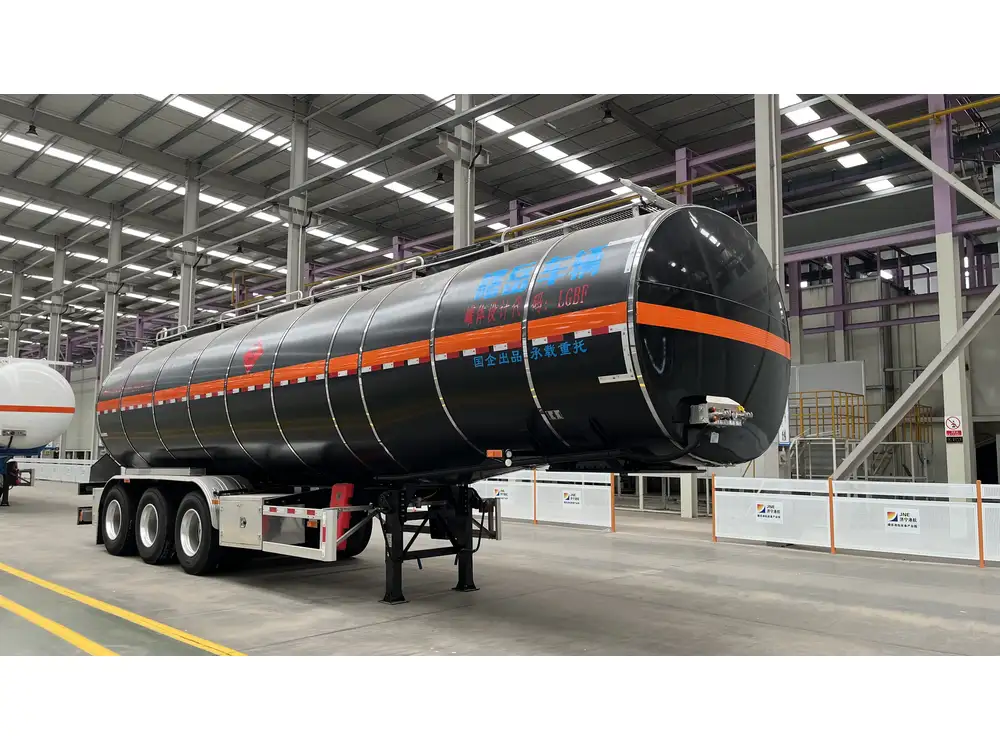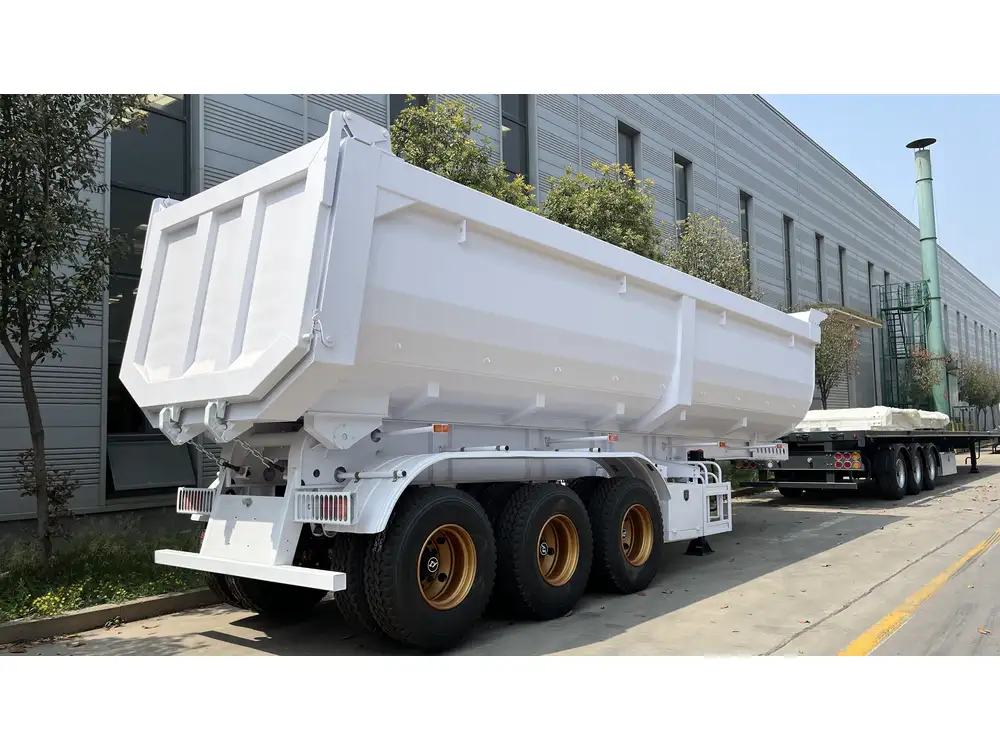When it comes to ensuring the safety and durability of your semi-trailer, understanding the correct specifications for brake systems is paramount. For owners and operators of the 2013 MAC flatbed trailer, grasping the details surrounding brake requirements is not just beneficial; it’s essential for optimal performance and compliance with regulations.
Understanding Brake Systems for Trailers
Before diving into the specifics of the 2013 MAC flatbed trailer, it’s crucial to grasp the fundamental aspects of brake systems designed for semi-trailers. Brake mechanisms can be categorized primarily into two types: air brakes and electric brakes.
| Brake Type | Description | Common Usage |
|---|---|---|
| Air Brakes | Pneumatically operated systems that utilize air pressure for braking. | Most heavy-duty vehicles, including trailers. |
| Electric Brakes | Operated via electric current, often employed in lighter, smaller trailers. | Light-duty trailers, camper trailers. |
Given the weight and load capacities of flatbed trailers, air brakes are typically the preferred selection due to their robustness and greater braking power.
Brake Types Suitable for the 2013 MAC Flatbed Trailer
The brake system specifications for the 2013 MAC flatbed trailer depend not only on the design but also on the model variations and load requirements. Based on extensive research and user feedback, we can confirm that the following brake types are compatible with the 2013 MAC flatbed trailers:

Air Brake System
Component Breakdown
Brake Chambers: Positioned on each axle, brake chambers convert air pressure into mechanical force. For the 2013 MAC flatbed, commonly used models include the Bendix 30/30 or Haldex 30/30 chambers, which are designed to provide superior stopping power under heavy loads.
Slack Adjusters: These components are essential for maintaining proper brake adjustment. The 2013 MAC flatbed typically utilizes manual or automatic slack adjusters, ensuring that brake engagement is maintained through continuous wear.
Rotors and Drums: The brake drum is critical for air brake systems. Look for drums that have a 12.25-inch diameter; this is standard for most heavy-duty trailers, including those produced in 2013.
Brake Linings: The linings can contribute significantly to braking performance. Opt for linings meeting FMVSS 121 standards, ensuring effective and reliable performance.
Electric Brake System
Though less common for flatbed trailers, if your model employs electric brakes—often seen in lighter configurations—you may consider the following components:
Electric Brake Assemblies: For a 2013 MAC model, use assemblies rated between 3,500 lbs to 5,200 lbs per axle depending on the trailer’s load rating.
Brake Shoes: Specify 9” or 12” brake shoes compatible with your electric brake assemblies, ensuring proper fit and effective stopping.

Key Considerations When Choosing Brake Systems
When selecting the ideal brakes for your 2013 MAC flatbed trailer, several factors play a crucial role:
Load Capacity: Ensure that the brakes can withstand the maximum weight of your trailer, particularly if it’s frequently loaded to its upper limits.
Type of Cargo: The nature of the materials transported dictates braking requirements. For instance, transporting bulk materials like steel may require heavy-duty air brakes, while lighter shipments might suffice with electric brakes.
Usage Environment: If your operations take place in mountainous or hilly regions, robust air brake systems are preferable due to their superior heat dissipation and fade resistance compared to electric brakes.
Compliance Standards: Familiarize yourself with regulatory requirements set forth by the Department of Transportation (DOT) and ensure all braking components meet these standard specifications.
Maintenance Tips for Braking Systems
Regular maintenance of your braking system is not only recommended but also necessary to preserve the long-term functionality and safety of your 2013 MAC flatbed trailer.
Inspection Checklist
- Visual Inspection: Regularly examine brake linings, chambers, and hoses for wear and tear.
- Pressure Testing: Check for leaks in air brake lines and ensure pressure is within recommended limits (usually around 90-120 psi for standard applications).
- Slack Adjustments: Periodically inspect slack adjusters to ensure they are functioning correctly, manually adjusting as necessary.
- Brake Fluid and Components: For electric brakes, occasionally check for corroded connections, ensuring wiring and voltage supply remain intact.

Maintenance Schedule
| Task | Frequency |
|---|---|
| Visual Brake Inspection | Monthly |
| Air Line Pressure Check | Every 3 months |
| Slack Adjuster Review | Every 6 months |
| Complete Brake System Check | Annually |
Maintaining a consistent checks-and-balances approach fosters a safer operating environment and prolongs the longevity of the braking mechanism.
Troubleshooting Common Brake Issues
Experiencing issues with braking systems can be stressful, particularly under heavy loads. Here are some common symptoms and their potential solutions that operators might encounter with the 2013 MAC flatbed trailer:
Symptoms & Solutions
| Symptom | Potential Issue | Solution |
|---|---|---|
| Brake Fade | Excessive heat build-up | Inspect for worn pads; ensure proper air flow to cool the system. |
| Uneven Braking | Misaligned axles or brakes | Check and realign axle settings. |
| Air Leaks | Damaged hoses or fittings | Inspect and replace any damaged components. |
| Warning Lights/Indicator Issues | Electrical or connectivity problems | Check wiring connections; replace faulty sensors. |
Addressing these potential dilemmas promptly not only aids in operational efficiency but also enhances safety for the driver and others on the road.

Conclusion
Understanding the specifications for brakes on the 2013 MAC flatbed trailer is an indispensable component of trailer maintenance and safety. The selection between air or electric brakes hinges on various factors including load, cargo type, and operating conditions. By following the guidelines provided in this comprehensive review and performing regular maintenance checks, operators can ensure their trailers remain safe and efficient on the road.
For further assistance on tailored solutions for your trailer braking needs or any queries regarding our products, feel free to contact us today. Let’s enhance your transportation logistics safely and effectively!



